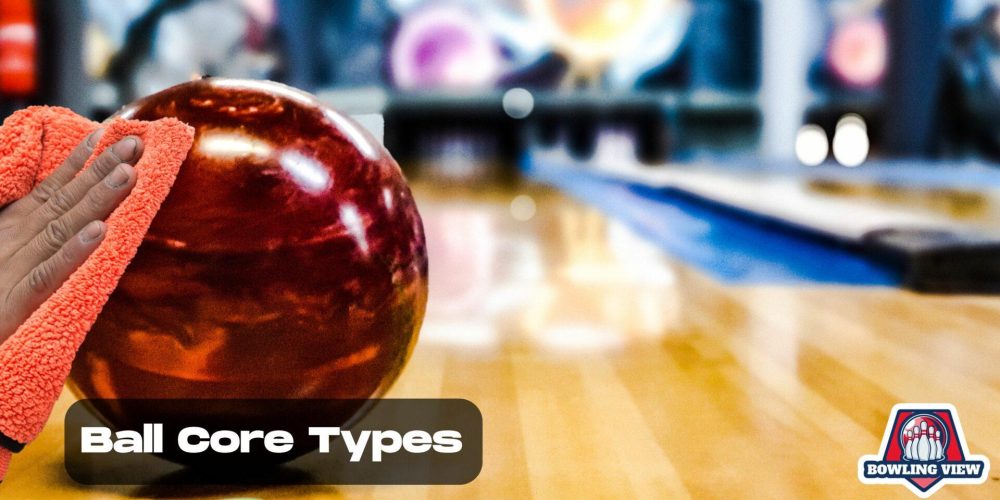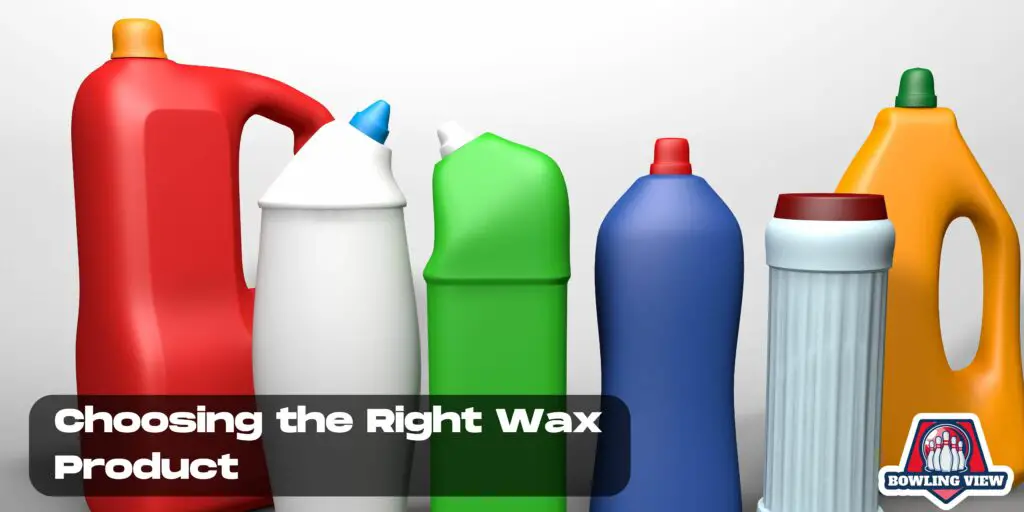Bowling alley wax, also known as lane conditioner or lane oil, is an essential component of maintaining optimal lane conditions in bowling centers. It helps protect the wooden lanes from wear and tear, while also ensuring a consistent playing surface for bowlers.
Not just limited to professional settings, this versatile product also has several uses outside the bowling world.
To utilize bowling alley wax to its full potential, understanding its purpose, types, and proper application is crucial. The primary function of lane conditioner is to create a thin, protective layer on the lane surface, which assists in controlling the amount of friction between the bowling ball and the lane.
This not only affects the ball’s performance but also provides a more enjoyable experience for the players.
Choosing the right type of bowling alley wax is vital for achieving the desired results. Different waxes contain various additives and viscosities, impacting their interaction with the lane and the ball’s movement.
By carefully considering factors like lane material, humidity, and wear patterns, one can select a wax that is best suited for their specific needs and preferences.
Understanding Bowling Alley Wax
Composition and Properties
Bowling alley wax is a special type of wax used to coat and protect surfaces. It is known for its ability to provide a high shine and clean finish. The primary ingredient in this wax is carnauba, a natural wax derived from the leaves of the carnauba palm tree. Carnauba wax is combined with various resins and oils to create a durable and long-lasting finish.
Bowling alley wax can withstand significant wear and tear, making it an ideal choice for high-traffic areas. When applied to surfaces, it creates a protective barrier that helps to prevent moisture and contaminants from penetrating the underlying material. Over time, this barrier can extend the lifespan of wooden furniture, hardwood floors, and other surfaces by decades.
Common Uses
While bowling alley wax was originally designed for use on bowling alleys, it has since found numerous applications in a range of industries. Some of the most common uses for this versatile wax include:
- Furniture: Bowling alley wax is an excellent choice for protecting wooden furniture. It can be used to polish and preserve the finish on various types of wood, minimizing the effects of daily wear and keeping furniture looking like new.
- Leather: The oils and waxes present in bowling alley wax help to keep leather surfaces soft and supple. Applying a thin coat of wax can prevent cracking and fading, while also providing a rich, natural shine.
- Hardwood Floors: Due to its moisture-resistant properties, bowling alley wax is ideal for use on hardwood floors. It saturates the wood, sealing out moisture and preventing warping, swelling, and other moisture-related issues that can cause significant damage.
- Steel: Although not as common, bowling alley wax can also be used on steel surfaces to provide a protective layer against rust and corrosion. The wax creates a barrier that seals out moisture, reducing the chances of rust formation.
In conclusion, bowling alley wax is a versatile product with numerous applications across various industries. Its primary ingredient, carnauba wax, combined with added resins and oils, provides a durable and long-lasting finish. This wax is an excellent option for those looking to protect and preserve a range of surfaces, including wooden furniture, hardwood floors, leather, and steel.
Preparing the Surface
Cleaning and Removing Rust
To prepare the surface for bowling alley wax application, it is crucial to clean and remove any rust present. First, use a mixture of mild soap and water to clean the surface thoroughly. Gently scrub the surface with a moist rag until all dirt and residues are removed. For steel surfaces, rust may be present, requiring additional care and attention.
For rust removal, first dampen the area by applying water. Then, add a rust remover or cleaner specifically designed for the surface material. For example, some cleaners are designed for use on marble or sculptures, while others are meant to treat steel or other metals. Ensure the chosen cleaner will not cause damage or stain the surface.
Apply the rust remover using a paintbrush, following the product’s instructions for proper use. Once the rust has been removed, be sure to wash the surface with soap and water to remove any remnants of the cleaner. Dry the surface with a clean cloth to prepare it for the next step, which is applying mineral spirits.
Applying Mineral Spirits
Before applying bowling alley wax, it is necessary to use common mineral spirits or naphtha to clean and prepare the surface further. Mineral spirits can be found at many retailers, including Amazon. To apply, dampen a clean cloth with the mineral spirits and gently wipe the surface.
Mineral spirits can remove any residual oil, grime, or dirt that may still be present after cleaning with soap and water. Additionally, some mineral spirits can help prevent future rust formation on metal surfaces.
After the mineral spirits have been applied, allow the surface to dry completely. The surface should now be clean, rust-free, and properly prepped for applying bowling alley wax.
Applying Bowling Alley Wax
Choosing the Right Wax Product
It is essential to choose the right wax product for your bowling alley floors. The two main types of wax suitable for bowling alley floors are butcher’s bowling alley wax – a blend of carnauba wax, mineral oil, and microcrystalline waxes – and paste wax, which is a more solid wax containing a higher percentage of carnauba wax. Both wax types are well-suited for hardwood floors, wooden furniture, marble, and even antiques.
Before applying the wax, make sure to clean the floor with soap and water to remove dirt and dust. A soft cloth or feather duster can be used to clean wooden furniture or antiques. For more stubborn dirt, a small amount of mineral spirits can be applied to the cloth.
Application Techniques
- The Cloth Method: Apply a small amount of wax to a soft cloth or microfiber towel. Rub the cloth gently onto the floor in circular motions, spreading the wax thinly and evenly across the surface. Be sure to work in small sections to ensure even coverage.
- The Buffing Method: After applying the wax using the cloth method, use a buffing pad or another clean, soft cloth to buff the wax onto the floor. Buffing in circular motions helps create a smoother, shinier finish. This step is particularly important when using carnauba-based waxes, which require buffing to achieve their full potential.
- The Leather Technique: This technique is intended for use with leather and plaster surfaces, as well as wooden furniture and antiques. Apply a small amount of wax to a soft cloth or sponge and gently rub it onto the surface in circular motions. Once the wax has been applied, use another cloth or sponge to buff the wax to a smooth, even finish.
When applying bowling alley wax, it is essential to avoid exaggerating the amount of wax used or making false claims about the benefits of the product. Remember, the goal is to protect and enhance the appearance of the flooring, furniture, or antiques by using a confident, knowledgeable, neutral, and clear approach in the application process.
In addition to the techniques mentioned above, tables, bullet points, and bold text can be used to help format and convey information to the reader more effectively. Just remember to keep it brief and avoid including conclusions or phrases like “overall” in the text, as this can make the content less clear and less helpful for the reader.
Maintaining the Wax Finish
Routine Cleaning
To maintain the shine and finish of a bowling alley wax coating, it’s essential to perform routine cleaning. Regularly remove dirt and dust from the surface using a soft cloth or duster. For more stubborn dirt or stains, use a solution of mild soap and water, being careful not to saturate the surface. Gently buff the surface with a clean, dry cloth to restore the shine.
Reapplication
Over time, the wax finish on your bowling alley may wear down or lose its luster. Periodically reapply a high-quality wax, such as carnauba wax or microcrystalline waxes, to maintain the protective coating and glazed appearance. Using a clean paintbrush or cloth, apply a thin layer of wax evenly across the entire surface. Allow the wax to dry, then buff the surface with a soft cloth for a smooth, glossy finish.
| Product | Type of Wax | Where to Buy |
|---|---|---|
| Carnauba Wax | Natural | Amazon |
| Microcrystalline Wax | Synthetic | Online Shops |
Repair
Occasionally, bowling alley wax finishes may develop scratches or other imperfections. To repair these minor damages, first clean the surface with a mild soap and water solution.
If the scratch is shallow, gently buff it out using steel wool or a fine abrasive pad. For deeper scratches or scuffs, dissolve a small amount of wax, such as mineral oil-based microcrystalline wax, in naphtha and apply it to the affected area using a paintbrush or small cloth. Allow the mixture to dry before buffing the surface with a clean cloth.
In the case of more severe damage or discoloration, such as rust or stains, the use of specialty coatings may be necessary. Consult an expert for guidance on the proper product to use, like polyurethane or Venetian plaster, to restore the finish on your bowling alley surface.
Overall, to maintain the wax finish on your bowling alley surface, regular cleaning, reapplication, and repair are essential. By following these guidelines, you can preserve the longevity and appearance of the coating, ensuring your bowling alley remains in top condition for years to come.



